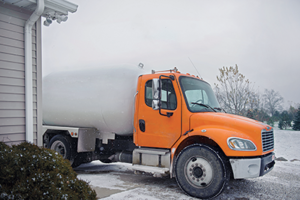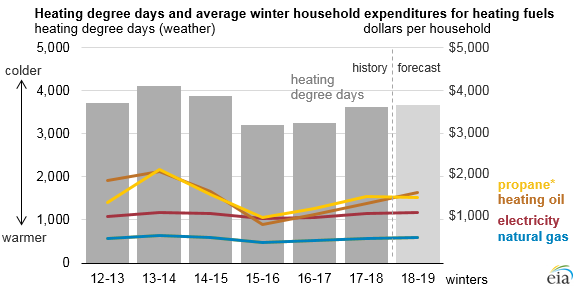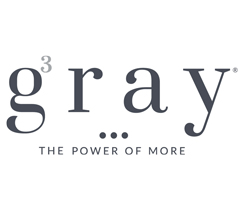EIA: Propane heating expenditures to remain stable this winter

Photo: iStock.com/realcreation
U.S. households keeping warm with propane heat this winter can expect little change in their energy expenditures compared to last winter and the previous five-winter average, according to the Energy Information Administration’s (EIA) Winter Fuels Outlook.
While most U.S. households can expect higher heating expenditures this winter, encompassing October through March, propane is the only fuel that will see lower heating expenditures, albeit 1 percent, compared with last winter, the EIA forecasts. Households heating with propane are expected to pay an average of $1,528 this winter.
Meanwhile, heating oil expenditures are expected to increase 20 percent (to $1,646) compared with last winter, while natural gas and electricity expenditures are expected to rise 5 percent ($644) and 3 percent ($1,181), respectively.
“There’s a pretty wide range this year,” says Tim Hess, product manager for EIA’s Short-Term Energy Outlook, noting the differences between heating oil and propane expenditures.
When compared with the previous five-winter average, propane expenditures don’t change much either – up 1 percent. Heating oil is up 14 percent, while electricity and natural gas are both up 6 percent against the five-winter average.
There’s also not much movement in the regional outlook for propane. Expenditures for Midwest households using propane as their primary heating source are expected to decline because the Midwest, the region with the highest concentration of propane heating, is the only region expected to have warmer weather this winter.
“In the Midwest, expenditures are forecast to be down 2 percent from last year,” Hess says. “That’s the result of prices that are a bit higher – 1 percent – and consumption that is forecast to be 3 percent lower.”

Content provided by Stacy MacIntyre | Source: U.S. Energy Information Administration, Short-Term Energy Outlook, Winter Fuels Outlook, October 2018
In the Northeast, propane expenditures are forecast to be 1 percent higher than last year, resulting from no change in the forecasted average price but a 1 percent increase of consumption compared with last winter.
EIA expects propane production to continue its growth pattern (14 percent higher compared with last winter); with little change in total propane consumption; and a 19 percent increase in U.S. propane exports.
“Propane production continues to grow notably because of the prolific growth of natural gas production,” Hess says. “However, even with this growth in production, inventories are starting the year 8 percent below the five-year average. Most of that deficit in the five-year average is in PADD 3, the Gulf Coast region. Midwest inventories increased recently, ending September 3 percent above the five-year average range.”
Higher expected winter heating expenditures this winter are mainly the result of higher prices for heating fuels, as temperatures are expected to be similar to last winter in much of the country, EIA says.
EIA’s short-term projections of heating demand are based on the most recent temperature forecasts from the National Oceanic and Atmospheric Administration (NOAA). NOAA’s forecast anticipates that the 2018-19 winter will be 1 percent colder than last winter, which is close to the average of the previous 10 winters.
















